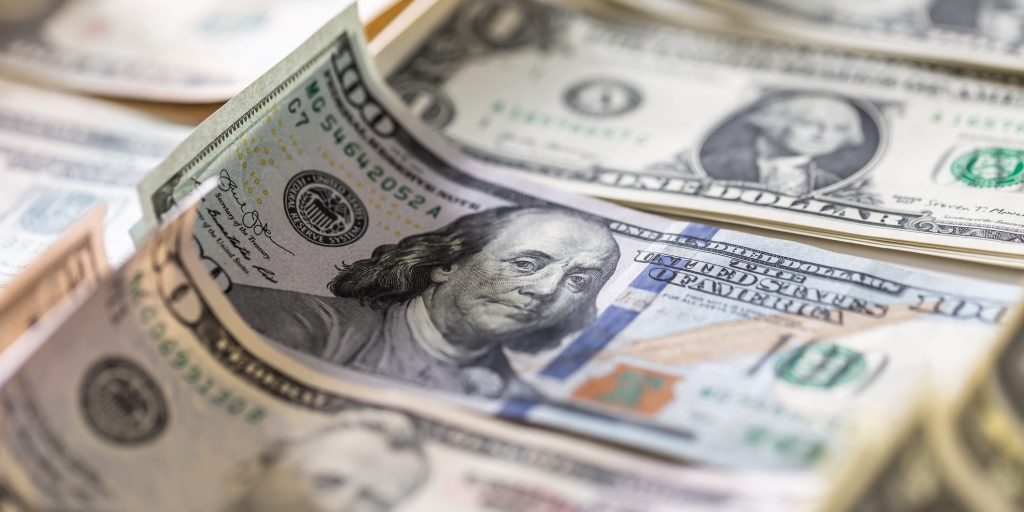- The US dollar index rose to a fresh one-month high on Friday on hawkish remarks by Fed officials.
- The index traded above 107, its highest since July 18, heading for a gain of 2.1% this week.
- As the central bank commits to more rate hikes, investors are piling into the safe-haven asset.
The dollar climbed to a fresh one-month high on Friday after hawkish remarks by Federal Reserve officials sent investors rushing to the safe-haven asset.
The dollar index gained 0.25% to trade at 107.76 and headed for its largely weekly increase since mid-March 2020, with a gain of 2.1% so far this week.
Its strong performance was the result of another round of Fed officials reiterating their committement to raising interest rates to cool inflation, which is still at 40-year highs.
San Francisco Fed President Mary Daly said rate hikes of 50 or 75 basis points in September would be a "reasonable" way to tame inflation. She signaled the Fed could continue to ramp up rates into 2023.
"[Consumers] depend on the Fed to not introduce unnecessary volatility. The worst thing you can have as a business or a consumer is to have rates go rapidly up and then come down. … It just causes a lot of caution and uncertainty," she told CNN.
Similarly, St Louis Fed President James Bullard said he would prefer to raise interest rates by 75 basis points next month and noted the Fed shouldn't "drag out" the process of raising rates into next year.
"We should continue to move expeditiously to a level of the policy rate that will put significant downward pressure on inflation" and "I don't really see why you want to drag out interest rate increases into next year," Bullard told the Wall Street Journal on Thursday.
The Fed's rhetoric has pushed investors to pile into the greenback as it suggests the central bank will act to keep the economy under control and prevent inflation from soaring further. Policymakers enforced that message in July minutes released earlier this week which suggested that the Fed will stick with rate increases to ward off inflation.
"The US dollar is a barometer of global liquidity, and a continued rise would eventually snuff out the improvement in financial conditions we have seen since the June lows in equity markets," Saxo Bank analysts said.
